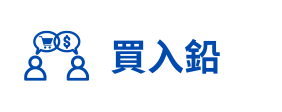Google has always been the longstanding search engine used by the majority of people around the world to find information. This necessitates Google to provide the most reliable, relevant, and accurate information to all searchers around the globe. Historically, Google used algorithm changes and updates to their language processing models to better understand web content to serve the best kind of information to the users, but Google recently published a blog post compiling all the updates and changes they made to their Search algorithms the past years. This gives us an inside look on how exactly Google chooses which information to display in their search results. Let’s find out.
How Google Determines Quality of Content That’s Displayed in the SERPs
As Google has continually said it, they fundamentally use the quality of the pages to determine if they’re eligible to be ranked highly in search. But the meaning of quality has always been in question both by webmasters and SEOs, so Google offered the three key elements to their approach to information quality:
First, we fundamentally design our ranking systems to identify information that people are likely to find useful and reliable.
To complement those efforts, we also have developed a number of Search features that not only help you make sense of all the information you’re seeing online, but that also provide direct access to information from authorities—like health organizations or government entities.
Finally, we have policies for what can appear in Search features to make sure that we’re showing high quality and helpful content.
Does this help? I’m not too sure. It’s still broad and doesn’t necessarily answer specific questions. To be fair, they did delve on the details of these three key elements, and here’s how I understood it:
Ranking Systems
They primarily delved on three well-known ranking systems that focus on quality – the BERT update, E-A-T, and Search quality raters. Delving on BERT first, they included how BERT is an improvement to their language understanding system that enables them to serve more relevant information in Search through gaining a deeper understanding of content. But BERT, however, cannot assess the quality and trustworthiness of the content they’re serving. That is why they use other “signals” or what we know of as factors to further enhance their ranking system. They use signals, such as links, to determine the quality and trustworthiness of these pages. Here’s an example of how BERT helps with determining more relevant search results:
Google Example of Applied BERT Model
So, in summary, Google uses BERT to have an in-depth understanding of the content around the world wide web while they use other ranking factors to make up for the inadequacies of the BERT model. Through this, they are able to serve the pages that help the users gain the information they’re looking for.
against low-quality content, including potential misinformation, and is work that we’ve been investing in for many years.”
It doesn’t cover all of their products but it does focus on the changes made on the accuracy and relevance of Search, News, and their autocomplete.
Experts, Fact Checks, and Search Policies
The blog post went on to Ireland Business Email List describe other features that can be found in the search results that help users find more reliable and accurate information:
Information from experts – This is especially focused on YMYL related searches wherein the knowledge panels are information that is evaluated by medical experts. Basically, for YMYL, most knowledge panels would have information from government websites, proven authority/expert websites, etc.
Fact checks and Additional Information – Since a good number of searches include looking for additional information that helps them understand the initial search topic they entered, Google provides tools for them to have resources about the initial searched topic. One example is the fact checks
webmasters can use to mark up fact
checks on the information in their pages.
Search Policies – Since Google has multiple features available in the search results that can contain wrong information, its search policies enable their enforcement team to take action immediately.
Key Takeaway
Even though the blog post is extensive enough
it’s broad enough to not answer any 買入鉛 specific questions that SEOs need the answers to. One thing I could give them is that they put in the effort to compile and go semi-in-depth in how they choose the information they choose to show in the search results. What do you think about their blog post? Let me know in the comments section below!
After having these ranking systems bring the
most accurate, relevant, and reliable results as possible, Google has the search quality raters to perform numerous searches and they will rate the quality of the results by running them through the Search Quality Rater Guidelines which includes E-A-T. This is especially focused on YMYL, crises, and civic information. They concluded this part by saying “…We’ve learned that sites that demonstrate authoritativeness and expertise on a topic are less likely to publish false or misleading information, so if we can build our systems to identify signals of those characteristics, we can continue to



